Contents
Introduction
All known interactions, from the subatomic to the interstellar, can be explained by the four fundamental forces of nature. These four forces have very different characteristics and play their own specific roles in the universe.
In this post, we’re going to review the four fundamental forces and compare their principal characteristics.
Let’s begin!
The fundamental forces in order of strength
From the strongest to the weakest, the four fundamental forces are: the strong nuclear force, the electromagnetic force, the weak nuclear force, and gravity.
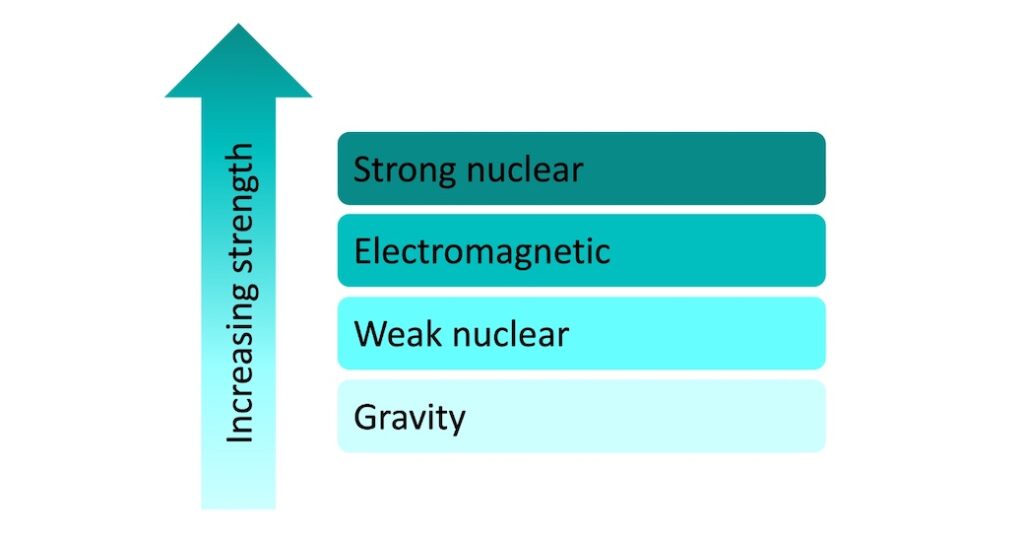
The strong and weak nuclear forces are felt on small scales and affect particles in the atomic nucleus. The electromagnetic and gravitational forces act on much larger scales and are the forces that are apparent in everyday life.
Ranges of the four fundamental forces
A striking feature of the fundamental forces is the variation in their ranges. The strong and weak nuclear forces have the shortest ranges, of \(10^{-15}\mathrm{m}\) and \(10^{-18}\mathrm{m}\), respectively. The range of the strong force is comparable to the atomic nucleus and the range of weak force is even shorter.
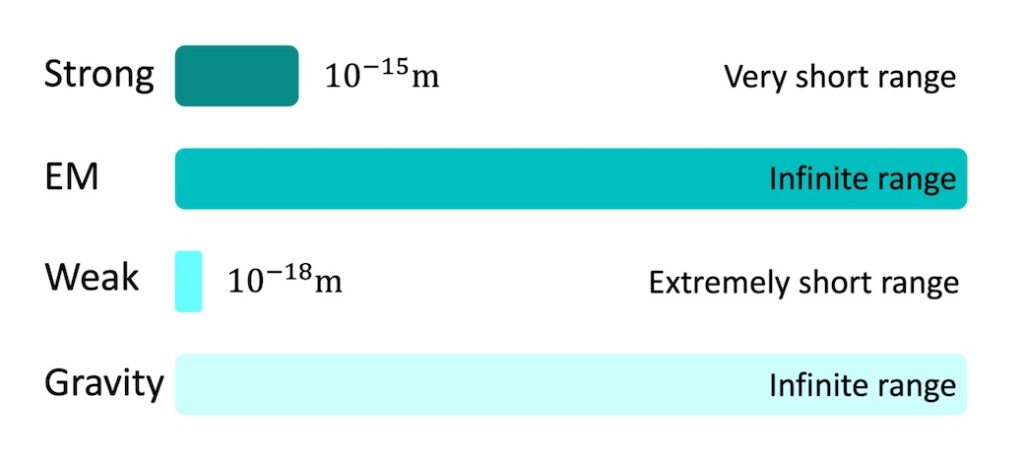
Meanwhile, the ranges of the electromagnetic and gravitational forces are infinite! As a result, the electromagnetic and gravitational forces dominate at larger scales.
Which particles are affected by which forces
Whether or not a particle feels a particular force depends on what type of particle it is and what its properties are. Most particles feel some but not all of the fundamental forces.
Quarks and their composites (called hadrons) feel the strong nuclear force. Hadrons include the familiar proton and neutron in the atomic nucleus, and so the strong force is very important here.
The electromagnetic force is felt by all charged particles. Stationary charged particles experience electrostatic forces, and moving charged particles additionally feel magnetic forces.
The weak nuclear force is felt by fermions, which are matter particles such as quarks and leptons. (Leptons include the familiar electron.)
All particles with mass feel gravity. This means that the vast majority of particles feel gravitational forces.
Interestingly, quarks feel all four forces! They feel the strong and weak nuclear forces as mentioned above, but they also feel the electromagnetic force because they are charged, and they feel the gravitational force because they have mass.
Which particles are affected by which fundamental forces is summarised as follows:
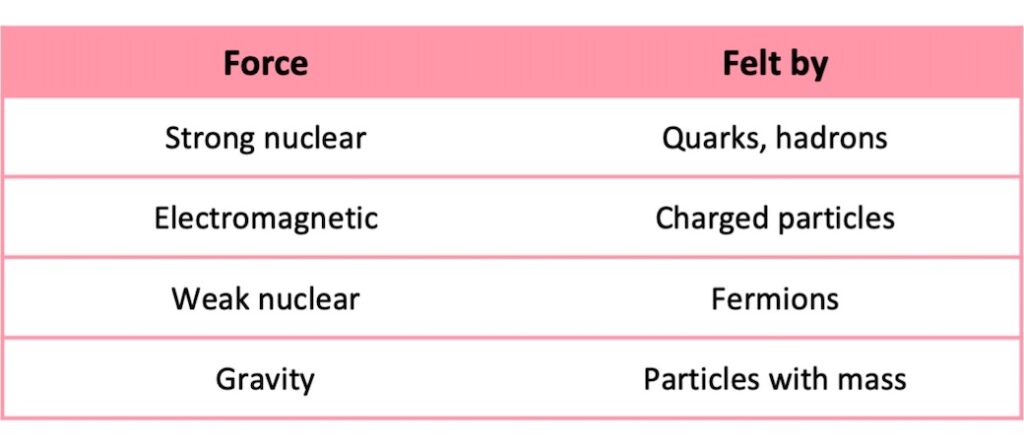
Roles of the fundamental forces in nature
As a result of their relative strengths, their ranges and which particles they affect, the four fundamental forces have different roles in nature.
For example, the strong nuclear force binds quarks to each other and hadrons to each other, and as such holds atomic nuclei together.
The electromagnetic force is responsible for electrostatic and magnetic forces on both subatomic and larger scales.
The weak nuclear force is responsible for various particle decays. These include beta minus decay, which stabilises certain atomic nuclei by converting one of their neutrons into a proton, releasing an electron and an anti-electron neutrino in the process.
The gravitational force is responsible for the attraction between massive objects, including the aggregation of matter in early star formation and the subsequent development of galaxies.
These roles of the fundamental forces are summarised as follows:
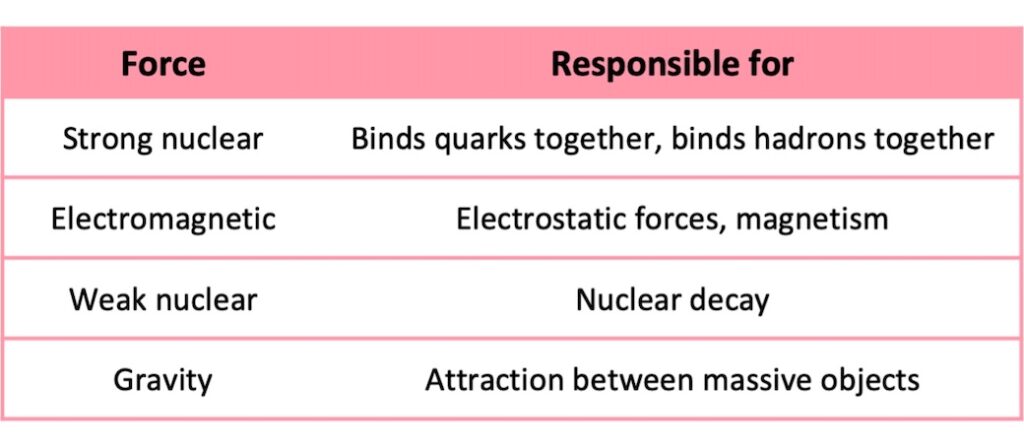
The three non-gravitational forces play an important role in atomic stability.
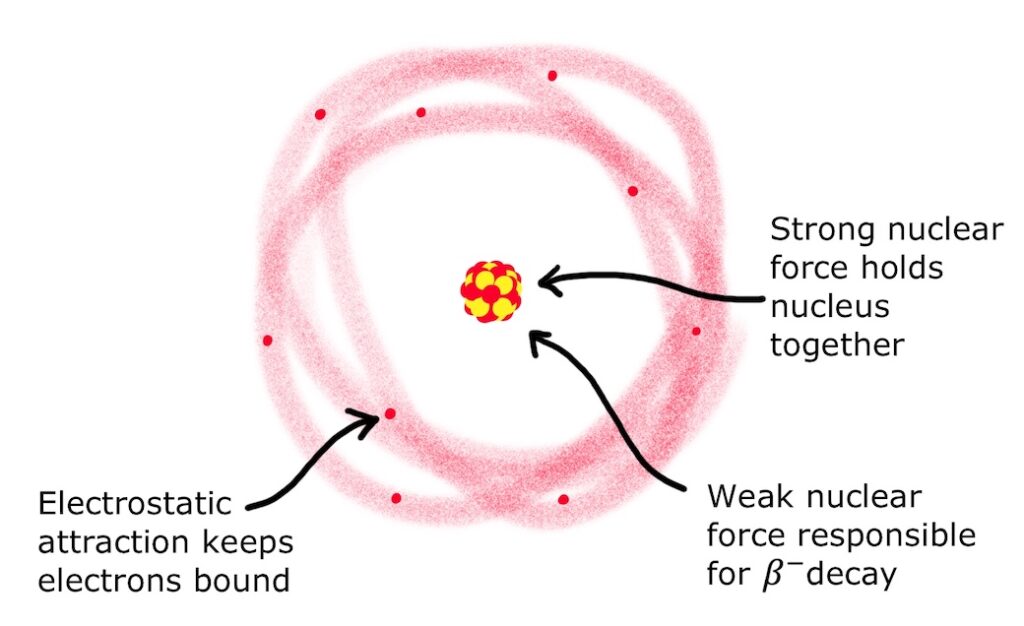
The strong nuclear force holds the nucleons (protons and neutrons) in the atomic nucleus together, counteracting the mutual electrostatic repulsion of the positively charged protons, thereby keeping the nucleus stable.
As mentioned above, the weak nuclear force can provide further stability to certain nuclei by converting one of their neutrons into a proton by beta minus decay.
And finally, the atom as a whole is kept together by the electrostatic attraction between the atomic electrons and the nucleus, which keeps the atomic electrons bound.
The fundamental forces are mediated by exchange particles
One of the most surprising things about the fundamental forces is that there is a particle-based mechanism by which they operate. The forces are mediated by exchange particles, meaning that particles feel forces by exchanging exchange particles back and forth between each other.
Exchange particles are specific to a particular force, and each force has at least one exchange particle. The strong nuclear force is mediated by the gluon, the electromagnetic force is mediated by the photon, and the weak nuclear force is mediated by the \(\mathrm{W^+}\), \(\mathrm{W^-}\) and \(\mathrm{Z^0}\) bosons.
No exchange particle has, however, been detected for the gravitational force. Although the hypothetical graviton is thought to mediate gravity, it has not yet been found experimentally.
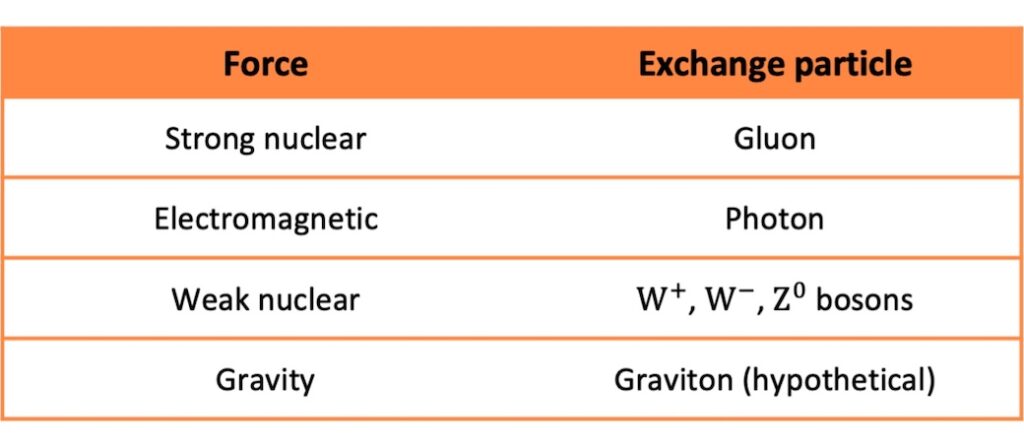
Let’s see some examples of forces being mediated by exchange particles.
The two up quarks and the down quark that make up a proton are held together by the strong nuclear force. This means that these quarks exchange gluons back and forth between each other to stay bound together.

Similarly, positively and negatively charged particles exchange photons with each other to experience mutual electrostatic attraction.

Summary of the fundamental forces
We’ve seen that the four fundamental forces have very different properties that contrast with each other. Their relative strengths, their ranges and the particles they affect determine the interactions they govern. They even have special exchange particles by which they are mediated!
These characteristics of the four fundamental forces are summarised as follows:
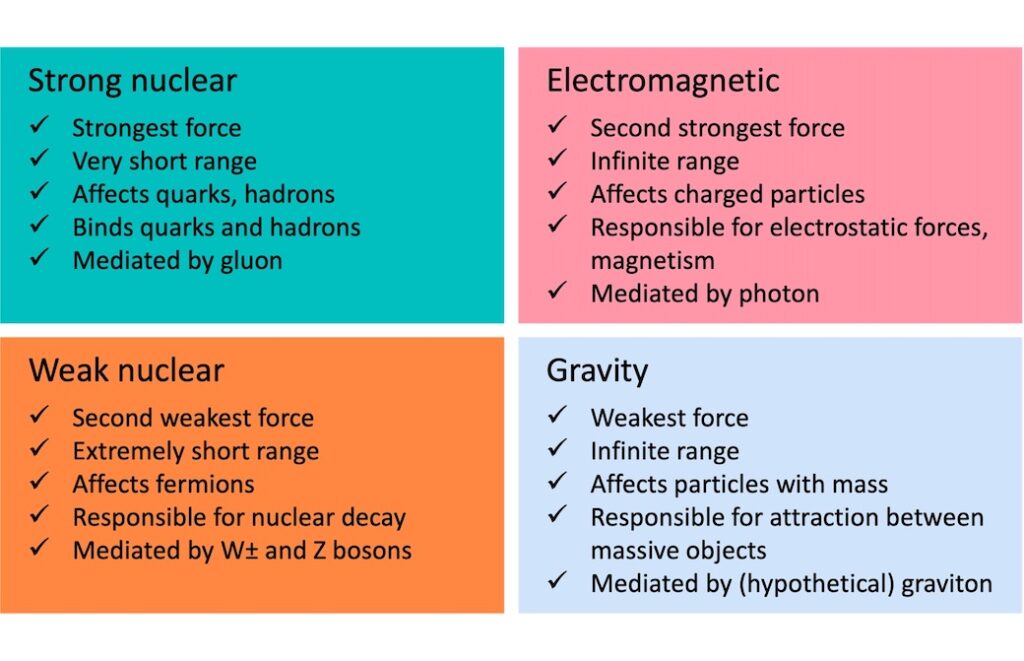
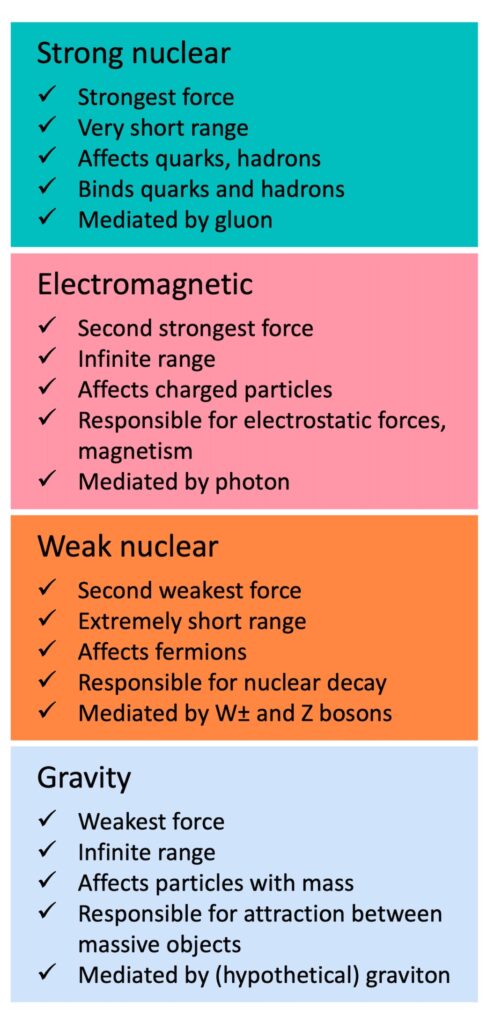
Conclusion
I hope you’ve enjoyed learning about the four fundamental forces of nature! It is remarkable to think that so many complex phenomena in the universe can be explained by just four fundamental forces.
There are several related topics you might like to explore next, including particles and the Standard Model, electric fields, gravitational fields, and nuclear physics.
Happy studying!
